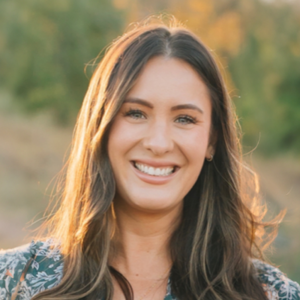Ad tech companies are buying gaming companies, and gaming companies, like Zynga, are buying ad tech.
In May, Zynga, maker of FarmVille and Words With Friends, spent $250 million to acquire in-app monetization platform Chartboost.
But don’t call Zynga – which itself was acquired by Take-Two Interactive in January for $11 billion – a “content fortress,” says Scott Koenigsberg, Zynga’s chief product officer.
(Mobile strategist Eric Seufert coined the term “content fortress” to describe entities that own a large amount of first-party data and content, as well as the ad tech to monetize it.)
Bringing Chartboost into the fold is more about “creating a better decision engine” that serves third-party developers as much as Zynga itself, Koenigsberg said.
“We have an immense amount of information about how players play games,” he said. “Our DNA has always been about experimentation and using data to optimize the player experience.”
With Chartboost on board, Zynga is able to extend its focus to monetization and acquisition for itself and for marketers.
Welcome to the first-party
Zynga and Chartboost aren’t going through a typical integration process, however.
 Although the two share their respective road maps and mutually beneficial features to enhance Chartboost’s data science models, Chartboost will continue to run its third-party marketplace.
Although the two share their respective road maps and mutually beneficial features to enhance Chartboost’s data science models, Chartboost will continue to run its third-party marketplace.
And while Chartboost accesses first-party data from Zynga, that data isn’t shared with its third parties, and Zynga doesn’t have access to any of Chartboost’s third-party data.
But the tie-up does give the combined company more visibility into how advertisers are spending and how much of that money actually reaches publishers. “We can make better decisions on our own behalf,” Chartboost CEO Rich Izzo told AdExchanger.
“All roads lead to first-party data,” Izzo said.
Mobile developers and marketers are focused on first-party because third-party data signals are less clear these days, and the weather isn’t set to change for the better.
Not unlike AppLovin, which also owns a portfolio of mobile games that serve as a source of first-party data – and not unlike pretty much anyone in the mobile ad ecosystem right now – Zynga is contending with signal loss. (Hey there, Apple.)
“Certain things happened that have made the market considerably less efficient than last year, and we want to gain back that efficiency,” Koenigsberg said. “Using our first-party data in a privacy-compliant way is the best way to do that.”
Even so, the situation is far from stable.
In August, Zynga’s CEO, Frank Gibeau, told investors that Apple’s AppTrackingTransparency (ATT) framework made it more expensive to acquire new players. (That’s why observers are noting a strange phenomenon on iOS: higher CPMs coupled with lower performance. Advertisers now must buy more ads to achieve the same or even fewer app installs or conversions they earned with targeted campaigns prior to ATT.)
Owning its own DSP at least helps Zynga reduce the third-party network fees it pays out to the big acquisition platforms like Facebook and Google.
“I’m not quite sure if it’s Zynga spending less or Zynga getting more value for each dollar spent,” Koenigsberg said. “That’s something we’ll learn over time.”
But the proof is in the math. If, for example, Zynga spends $1 to acquire a user and only 70 cents reach the publisher, that means its bid was effectively only worth 70 cents. With Chartboost, Zynga can pay more directly to publishers while spending less overall, because the intermediary fees accrue back to the company.
That said, Zynga isn’t angling to stop working with partners. Facebook and Google will probably always be in the mix.
“But the margin we used to pay for every dollar you spend – we don’t have to pay that anymore,” Izzo said “And from there you can either save the money or you can spend even more and create greater value and growth.”
Zynga’s ongoing investment in ad tech was particularly appealing to Take-Two.
After its acquisition of Zynga earlier this year, Take-Two CEO Strauss Zelnick told GamesIndustry.biz he expects “$500 million in annual revenue synergies” over the next few years, excluding new game releases.
“That simply speaks to doing a better job using our combined one billion-person consumer database, doing a better job with data analytics [and utilizing] their Chartboost [advertising] platform,” Zelnick said.
Chartboost has a bunch of different offerings as part of its stack, including a DSP, an exchange, an ad server and a mediation layer. Whereas a typical waterfall might have 100 line items, Chartboost can enable thousands, Izzo said.
Although Chartboost does offer in-app bidding, most of the publishers it works with still rely on a hybrid method that involves a waterfall setup.
But Zynga isn’t necessarily pushing for one method over the other, Koenigsberg said, despite the fact that most of the major ad networks are increasingly moving toward advanced bidding.
“We’re performance based,” he said. “If the advanced bidding line items perform better than waterfall line items, that’s what will get more traffic.”















